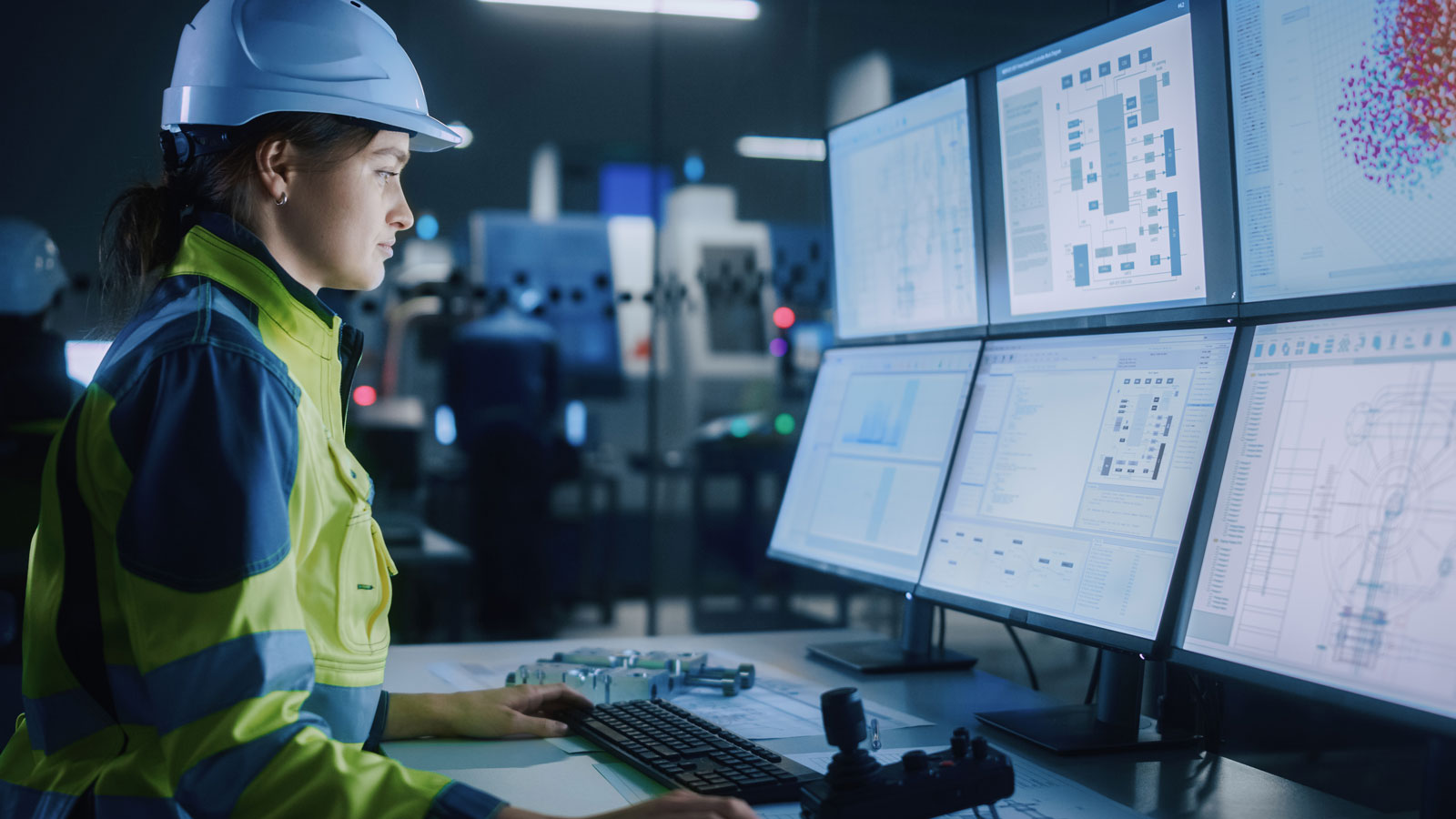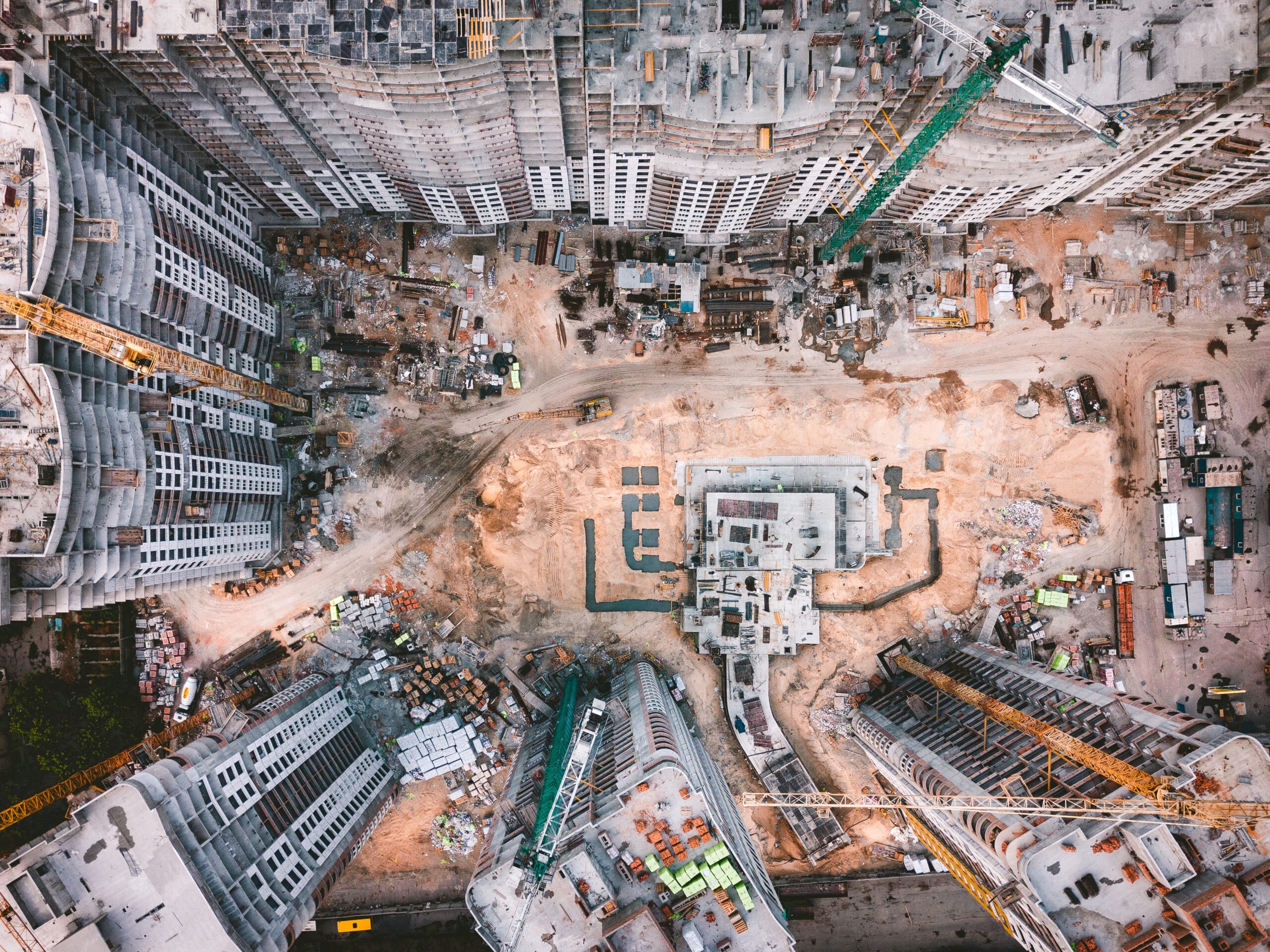Automating measurements
Optimizing and automating work
The high potential for optimizing and automating work is driving interest in the use of artificial intelligence and machine learning in the construction industry. AI/ML systems can be applied to processes such as:
The growing interest in AI and ML is driven by the increasing amount of data which is being collected and processed with new tools. Engineers on construction sites are taking a lot of digital photos and videos to gather information about the current situation on site. Although specialized tools are being used, the high image quality of smartphone cameras is democratizing the use of data on construction sites. As a result, a number of photo logging services have emerged in recent years to provide visual documentation of the construction phase, such as EarthCam, MulitVista and JobSiteVisitor.
While it is easier and faster to use this software to organize data, its capabilities are limited. First, it requires assigning employees to take and archive photos and videos on a regular basis. Second, the aforementioned software does not provide the ability to compare current photos with the project plan and schedule to monitor the current rate of progress, and does not allow automatic sorting, annotating, storing, deleting and distribution of this data. Also, evaluating construction progress from photos and comparing them with 2D drawings or text-based schedules is time-consuming and error-prone work. This is why drones and software capable of automatically processing this data and using it for the aforementioned analytical activities are becoming increasingly popular.
The wide applications of AI/ML result from their technical capabilities. Machine learning is a set of algorithms based on statistical models to map (model) objects, various phenomena and processes, including those occurring on a construction site. In short, they recognize patterns. Once properly calibrated and adjusted to the object or process being mapped based on historical data, the selected model will be able to analyze what is happening on the construction site in relation to the plan or object being analyzed and recommend appropriate decisions. Machine learning is classified into four types of learning algorithms: neural networks, support vector machines (SVMs), Bayesian networks and genetic algorithms. Neural networks are also known as deep learning, which enables image and object recognition. In order for a program to “see” an image as a human sees it and recognize objects, a corresponding algorithm analyzes and classifies each pixel in the image and assigns it to the appropriate category, which is also known as semantic segmentation.
These technologies enable a range of applications.

TABLE OF CONTENTS:
Monitoring of employees and work progress
Executives may have knowledge of how many people are involved on a given project, but they do not have accurate information about how much work has been done and whether it has been done correctly at all. This is due to the complexity of the projects and the interdisciplinary nature of the teams, who work on a number of multiple components. With so many components to inspect, accurately tracking progress and assessing progress is impossible without specialized software. Without such systems, budgets and schedules can be significantly exceeded, leading to additional costs and delays. AI-based image recognition systems can provide decision-makers with almost real-time information on schedule, budget and quality performance.
Winning contracts and commercial advantage
AI and natural language processing (NLP) can learn from previous bids to identify key success factors for winning (or not) a tender, thereby increasing the likelihood of winning a customer, as well as the margin of a project.
Measurements
AI systems allow to measure, for example, the amount of material stored at a construction site, check if there is a need to place a supplemental order, and calculate how many trucks are needed to carry the load.
Subcontractor management
Project data such as construction site monitoring and real-time predictive analytics can be used to bill subcontractors and assess the quality of work they have performed. In addition, some subcontractors may cause damage, leading to claims or delayed payments. Having detailed documentation can avoid these problems.
Security
Wearing appropriate equipment is a necessity, not an option. AI systems can detect people and objects, making it possible to check whether a worker is wearing protective gear and inform security officials of violations. With the power of AI and machine learning, site managers can also better identify, prioritize and monitor ongoing risks not visible at first glance and make data-driven decisions. As a result, AI can help make construction sites safer, identify potential safety risks and send real-time warnings.
Image recognition through the use of AI and machine learning
Image recognition through the use of AI and machine learning also provides an opportunity to feed information to digital twins, as well as to compare on-site field conditions with plans (for example, supporting twin models). This makes it easier to optimize schedules in terms of task sequencing and meeting deadlines.
Recommendations
AI systems can recommend the best construction techniques for a site based on previous projects and plans created during the design phase. With this information, engineers can make important decisions guided by objective analysis and predictions rather than subjective judgment.
Optical Character Recognition
Such tools replace manual transcription of documents or redrawing, allowing to search them and find the necessary data.
Early warning systems
By training algorithms to identify patterns in the data, anomalies and problems can be detected and then alerts can be sent to key stakeholders about the situation on site.
Working on drone data
Using drones to collect accurate survey maps and aerial photos of a construction site, as well as remotely tracking progress, saves time and project costs. Drone inspections are 5 to 20 times faster than traditional methods involving rope access, scaffolding, lifts and booms. The use of artificial intelligence in drone software and data analysis platforms can enable a drone to fly around as far as 150 kilometers of construction site, take pictures and transmit them to a data analytics platform, and, after a short period of time, send the user very accurate reports, such as those showing the progress of work every 100 meters. In addition, aerial photos can give project managers a different perspective and help them spot potential problems that may not have been visible from the ground.
Like the article? Spread the word
Like the article? Spread the word
Tips, news, insights
Related articles
Check our articles and get newest industry insights.






